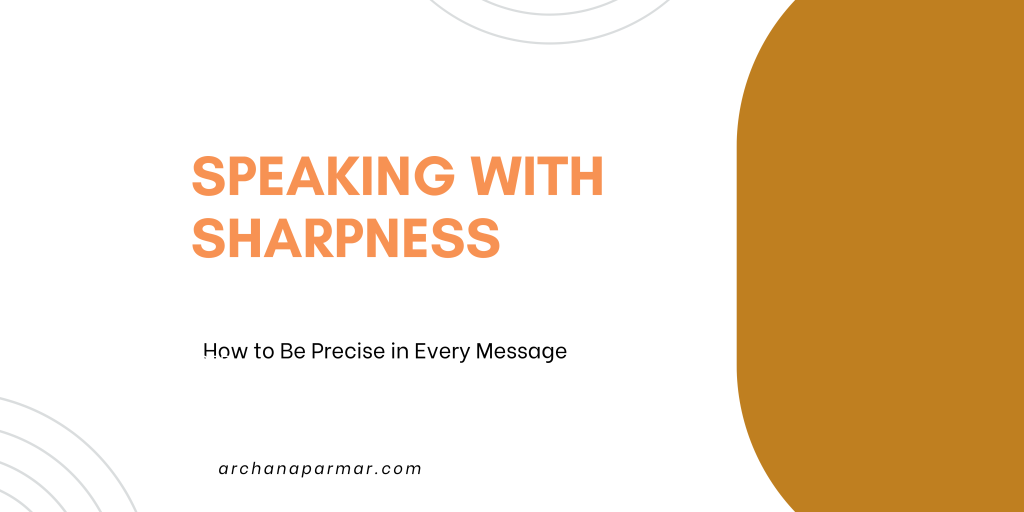Introduction
Precision isn’t just about choosing the right words—it’s about knowing when to stop. Many professionals, especially those who think in layers, tend to repeat themselves or explain the same point in multiple ways. While their intent is often to ensure understanding, the result can be overwhelming for the listener or reader. Editing—both in writing and speaking—is the discipline that transforms layered, verbose thoughts into sharp, focused messages.
This article explores practical editing techniques, with a special focus on people who struggle with verbosity, repetition, and layered expression.
The Role of Editing in Precision
Editing is the process of refining communication so that only the most essential, impactful parts remain. In writing, editing trims unnecessary words, clarifies meaning, and polishes grammar. In speech, editing is about self-monitoring: choosing clarity over repetition, and directness over meandering.
Think of editing as sculpting—removing the excess until the form is sharp and intentional.
May you like this :- Precision in Communication: The Key to Clarity, Authority, and Impact
Why People Repeat or Speak in Layers
- Fear of not being understood → leads to rephrasing the same idea multiple times.
- Desire to sound thorough → creates clutter instead of clarity.
- Thinking while speaking → results in long, looping explanations.
Recognizing these patterns is the first step toward breaking them.
Techniques to Enhance Precision in Writing
- Cut redundancy: Eliminate repeated ideas or over-qualifiers.
- Verbose: “It’s absolutely essential and very important to submit the report by the deadline.”
- Precise: “Submitting the report by the deadline is essential.”
- Replace vague words with specifics:
- Verbose: “We should do something about improving the process.”
- Precise: “We should automate the review process.”
- Use strong verbs over abstract nouns:
- Verbose: “We need to make a decision about the implementation.”
- Precise: “We need to decide on the implementation.”
- Break down long sentences: One idea per sentence reduces confusion.
Techniques to Enhance Precision in Speaking
- Layered-to-linear translation:
- Start with the core message in one sentence.
- Add supporting details only if needed.
- End with a short summary.
- Manage repetition with structure: Use markers like “To summarize” or “The key point is” instead of circling back.
- Practice word economy: Deliver the same idea in half the words.
- Use pauses instead of filler words: Silence is often more powerful than “you know” or “basically.”
- Record and edit yourself: Listening back reveals where you repeat, hedge, or wander.
Before-and-After Examples (Speech Editing)
- Verbose:
“So what I mean to say is that in this project, what we really need to do, in my view, is to maybe extend the timeline a bit, because right now, if you look at it carefully, we might actually be rushing through some things too quickly.” - Precise:
“We should extend the project timeline—it feels rushed.”
Practical Exercises for Verbose Speakers
- 30-Second Story: Summarize a personal experience in 30 seconds, then again in 15 seconds.
- One-Idea Rule: Limit yourself to one sentence per idea before pausing.
- Mind-Map to Headline: Take a complex, layered thought, map it out, then boil it down to a single headline sentence.
- Post-Conversation Reflection: Ask, “What did I say that wasn’t necessary?”
Benefits of Editing for Precision
- Stronger impact: Listeners remember the message instead of the noise around it.
- More authority: Brevity signals confidence and clarity of thought.
- Better engagement: Audiences listen more closely when each word counts.
- Reduced misunderstandings: Less clutter means fewer misinterpretations.
Conclusion
Verbose communication often comes from a good place—wanting to be clear, complete, and convincing. But clarity doesn’t come from repetition; it comes from discipline. By learning to edit both your writing and your speech, you turn layered thoughts into sharp messages that land with impact.
Editing is not just a technical skill—it’s a leadership habit. Master it, and your communication will not only be precise but also powerful.

